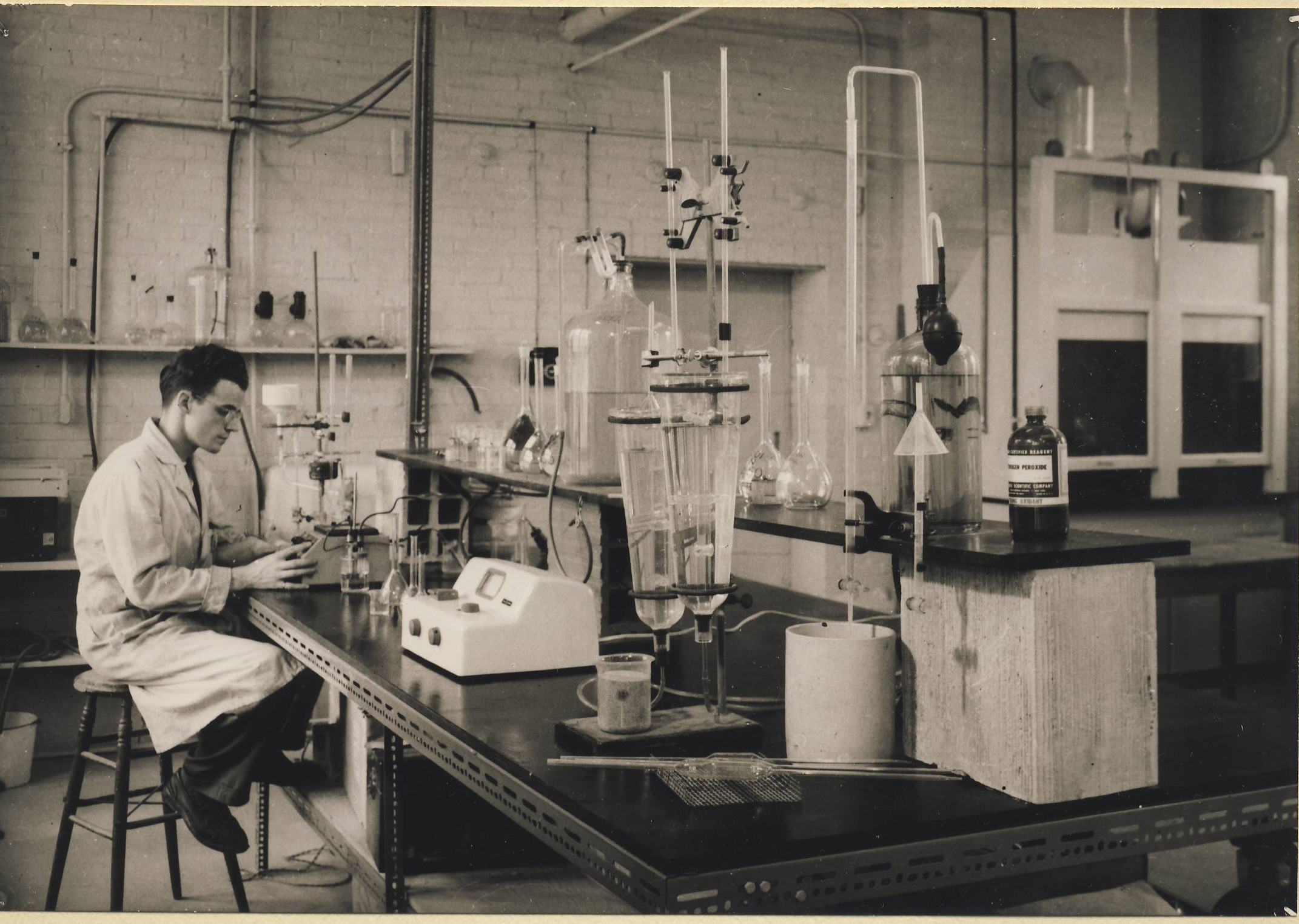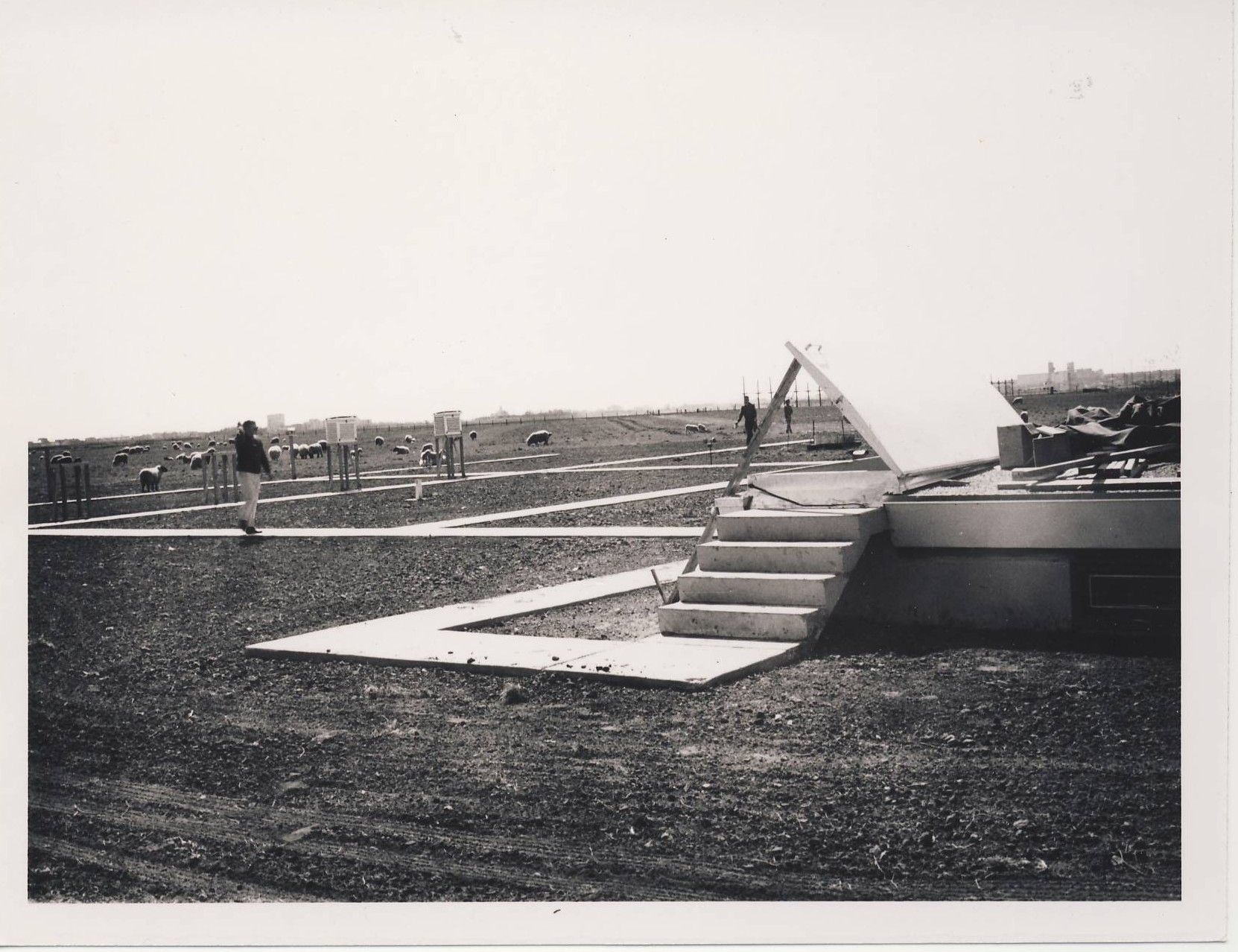“Innovation Insight” is a blog series written by SRC’s President Emeritus, Dr. Laurier Schramm, which aims to shed light on the importance of innovation in driving economic, societal and environmental growth. This is the second story in a sub-series about SRC’s evolution over the past 70 years.
Nineteen forty-seven was SRC’s first full operating year. SRC established a head office in Regina, a Board of Directors and several Technical Committees for program design. The initial strategic direction for the company was to undertake applied research targeted at developing “the resources and economy of Saskatchewan.”

Early Applied Research Projects
In its early years, SRC sought to accomplish this by funding specific applied research projects that were conducted at the University of Saskatchewan. For the most part, the university faculty donated their time and the funds went to the direct operating costs of the projects. The first main applied research projects were aimed at the province’s diverse natural resources and, of course, agriculture.
In order to advance the applied research work, it was often necessary to also develop new and/or improved physical and analytical measurement techniques and new laboratory and field testing equipment. The virtually continuous development of new and improved laboratory techniques was to become a characteristic feature of SRC’s work that has continued to the present day.
Developing Collaborative Relationships
In 1950, SRC began to look beyond its internal and university programs, and started to develop relationships with other research organizations in Canada, beginning with the National Research Council of Canada, which had just opened its Prairie Regional Laboratory in Saskatoon. SRC also developed a close working relationship with provincial government officials who shared an interest in natural resource economic development, which has also strengthened and endured to the present day, with what is now the Saskatchewan Ministry of the Economy.

Facilities Expansion
By 1951, SRC’s research programs were proceeding well and it was decided that the next phase of SRC’s evolution would be to develop dedicated facilities “designed to handle problems in research referred to it by Saskatchewan industry.” In 1955, the Board and the provincial government approved the construction of a permanent headquarters, laboratories, and pilot plant facilities, together with the hiring of a team of permanent technical staff that could undertake a full-time program of practical scientific and engineering research, testing, and development.
The 50s and 60s brought increased emphasis on projects related to Saskatchewan’s oil and mineral resources. In 1956, Saskatchewan’s Industrial Minerals Research Branch was acquired, bringing with it SRC’s first laboratory and its first major field equipment. SRC’s first pilot plant involved a rotary kiln, which commenced operation in 1956 and was used to test lightweight aggregate materials for making concrete.
SRC’s first laboratory building was designed and constructed in Saskatoon between 1956 and 1958. It was anticipated that the work would require periodic adaptations to provide “quick solution of a large number of diversified … problems … rather than to exhaustive investigation in a few major fields,” so care was taken to ensure versatility of equipment and facilities. The building included laboratories, high-head pilot plant space, offices, meeting rooms, shops, map room, and a library.
As demands for industry-driven R&D increased, by 1962 it had already become necessary to design a third floor, which was constructed in 1963, and which enabled a rapidly expanding analytical chemistry group. SRC was also equipped with some very sophisticated equipment for that period of time, such as a first-generation commercial digital computer, infra-red spectrophotometer, and electron microscope.
Increasing R&D Capabilities Fuels Growth
Probably the two most important forerunners of long-standing, high-impact, strategic program areas involved (1) working with uranium mining companies like Gunnar Mines Ltd., Lorado Uranium Mines Ltd., and Columbia Metals Exploration Co., to help them develop and improve processes for separating uranium from uranium ores (this was the first pilot plant project in SRC’s new 1958 building), and (2) working with the Lloydminster Petroleum Association, the Alberta Research Council (ARC), and Husky Oil Ltd. on ways to improve oil recovery from the Lloydminster-area heavy oil reservoirs.
As SRC’s testing and analysis capabilities increased so did requests for technical assistance from individuals, municipalities, industry and other government departments and Crown corporations. As early as 1959, SRC was conducting significant work for Saskatchewan Power Corp. (particularly in water management for cooling at coal-fired power utilities, such as at Boundary Dam) and for Saskatchewan Minerals Corp.
In the 1960s, SRC also expanded its work in environmental issues. For example, SRC’s climatology research began in about 1962 with the aim of developing improved weather forecasting and even control, in order to aid the agriculture sector. SRC acquired the provincial climatological station and prior climate records dating back to 1902, and created the “SRC Climatological Reference Station,” which by 1966 was the best equipped meteorological monitoring station in Western Canada.

Industry-Driven R&D
A combination of demonstrating an ability to deliver practical results of strategic interest to the province and contributing to Saskatchewan’s economic growth enabled significant government funding increases. In addition, with so much new work on practical industry problems the contract revenues from industry grew and became an important part of the revenue mix. As a result, the number of SRC employees had risen to 19 by 1958, 60 by 1968, and 98 by 1972.
Of course the building of all these capabilities was a means to an end, that of being able to take on an increasing diversity and depth of programs that would be of strategic interest to the province of Saskatchewan, and to work closely with industry on those programs. In this SRC was in good company in Canada. In a 1971 assessment for the Science Council of Canada Andrew H. Wilson wrote:
“The Research Councils and Foundations in the provinces of Canada are unique … They are quite effective and flexible in operation, and are generally closer to industry than are the universities. They are in a position to assess regional problems and to form an important link between local industry and the centres of competence in both provincial and federal departments and agencies. They are familiar with the problems of small companies, the more technologically oriented of which have perhaps more innovation and growth potential than most other companies. The Councils are, indeed, a Canadian resource … [that] have grown and developed to an extent that their competence can be used beyond the borders of their respective provinces and for the benefit of Canada as a whole.”
SRC was on the map and ready to face the maturing and commercial years that would lie ahead.
Interested in learning more about the evolution of research and development in Saskatchewan? Check out Research and Development on the Prairies: A History of the Saskatchewan Research Council.
Reference:
Schramm, L.L., Research and Development on the Prairies: A History of the Saskatchewan Research Council, Electronic Ed., Saskatchewan Research Council, Saskatoon, and Amazon.com Inc., 2016.
